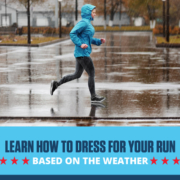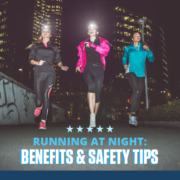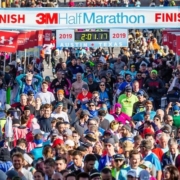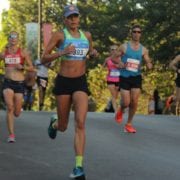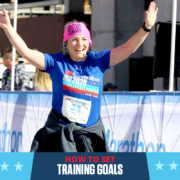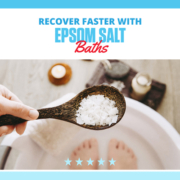What to Wear on Your Run Based on the Temperature
Be prepared for any weather on your next run when you know what to wear
Knowing what to wear can keep you running in the hottest days of summer and the coldest days of winter. If you aren’t dressed properly you could experience discomfort while you’re running. You won’t have to skip a run because of the weather when you’re dressed in appropriate running gear. Summer running clothes are obviously different from winter running clothes. But how different?
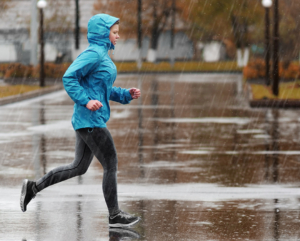
Wear a rain jacket if it’s raining and layer according to the colder temperatures.
You’ll need to focus on entirely different things when you’re running under different temperature conditions. For the spring and summer months, ventilation is key. The more breathable your clothes are, the more comfortable you’ll feel. But for the cold winter months or wet-rainy days, your clothes should be made of insulated material and you should dress in layers. Check out our helpful advice and know what to wear based on the temperature. Whatever the weather, stay safe on your run with these 7 safety tips.
90°F+
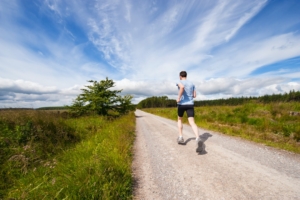
Light-colored, sweat-wicking gear is essential when temperatures exceed 90°F.
This kind of weather is extremely hot so ventilation is critical. Running in light-colored singlets and shorts is ideal. Some women run in their sports bra and some men run shirtless. Make sure you apply sunscreen! Moisture-wicking socks help keep your feet dry. You sweat a lot, so quick-drying material can wick away sweat without slowing you down. A hat and sunglasses are crucial too as they will protect your head and eyes from the sun’s rays. Pro tip: here are some additional ways to beat the heat.
70-90°F
This kind of temperature is still warm for most runners, especially if it’s muggy with humidity. Again, running gear that’s light-colored and wicks sweat is ideal. Shirts, singlets, and shorts will work in these temperatures. Wear reflective running gear and follow these safety tips if you run in the early morning or evening.
60-70°F
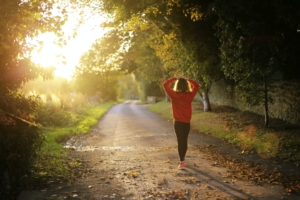
Leggings and a pullover are great to wear running as temperatures begin to drop.
When the temperature begins to drop, that usually means runs are getting longer and longer. You might still wear a shirt and shorts, but you might also include a thin pullover. It’s a good idea to dress in layers if needed because you can always take off the pullover and tie it around your waist. As your miles increase, make sure you properly recover by following this long-run recovery timeline.
50-60°F
This temperature range is ideal for most runners. Opt for your favorite running shirt and a comfortable pair of running shorts. Don’t forget your pullover. As temperatures begin to drop, you’ll want to wear a hat to help keep your head warm.
40-50°F
This kind of temperature can be extremely pleasant for an outdoor run. A long-sleeved pullover, shirt, shorts, and moisture-absorbent socks will set you up for a great running experience. As the temperature falls below 45°F, consider swapping out your shorts for leggings. Wear a hat or beanie to keep your head warm. Consider gloves if your hands take a long time to warm up. Follow this 10-minute warm-up to get your body ready to run in the colder temps.
30-40°F
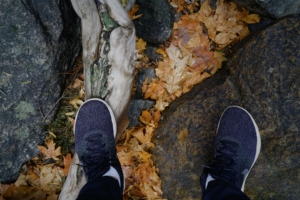
Moisture-wicking socks and comfortable shoes are essential for all temperature ranges.
This is when you’ll start to feel chilly on your runs. It’s time to start layering! You’ll need at least two layers on top, running tights, and wind/waterproof gloves. Add a third layer on top if you don’t like the cold. A headband or beanie can keep your ears warm. Moisture-absorbent socks are still necessary.
20-30°F
It’s time to bring out your lightweight jackets! A base layer and two long-sleeved tops will keep you warm. Add your lightweight jacket on top of that to prevent yourself from feeling cold. You’ll also need thick running pants. Alternatively, consider thermal leggings and wear your running shorts/capris/track pant on top of it. Add your moisture-absorbent socks, warm gloves/mittens, and a cap for your head, and you’re ready for your outdoor run!
Even if you live somewhere where the temperature can go from crazy hot to biting cold within the same year, you can keep up with your outdoor runs with the right outfits. This is the complete list of clothes you need to run for any temperature. As long as you dress accordingly and know what to wear, you can knock out those runs and keep your training on schedule.

